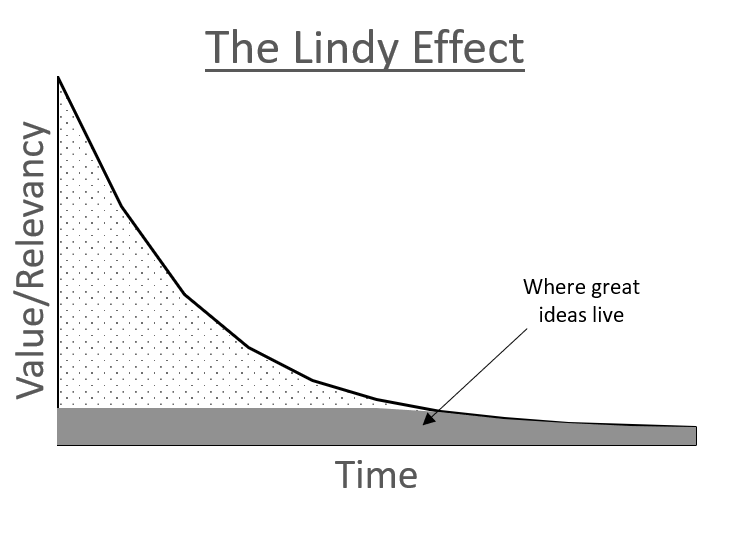Introduction
In the realm of decision making, numerous mental models guide our thought processes. One such model, the Lindy Effect, offers valuable insights into the illusions of durability and timelessness that often sway our choices. Rooted in human psychology, this concept asserts that the future life expectancy of non-perishable entities can be predicted based on their current lifespan. By understanding the Lindy Effect, we can unravel the fallacies that lead to irrational decisions and learn how to make more objective choices. In this blog post, we will delve into the intricacies of the Lindy Effect, explore its manifestations in various contexts, analyze the underlying biases, and provide practical strategies to overcome this cognitive trap.
Defining the Lindy Effect
The Lindy Effect, named after the famous deli in New York City where it was popularized, is a mental model that posits that the future lifespan of non-perishable things can be estimated based on their current age. Put simply, the longer something has already lasted, the longer it is expected to last. This principle has been observed across diverse fields, from technology to ideas, and even human institutions.
The Relevance of the Lindy Effect in Decision Making
Understanding the Lindy Effect is essential in decision making as it challenges our inherent biases towards the “timelessness” of certain entities. By acknowledging that durability is not an inherent quality, we can avoid making misguided choices based solely on the reputation or longevity of a product, concept, or institution. Recognizing the Lindy Effect allows us to focus on the intrinsic qualities and merits of an entity, rather than being swayed by its past.
Manifestations of the Lindy Effect
- Personal Life Decisions: Imagine a person who has been using the same outdated smartphone for several years. Although new models with advanced features are available, this individual continues to cling to the outdated device due to its perceived longevity. By succumbing to the Lindy Effect, they may miss out on the benefits and enhanced capabilities offered by newer technology.
- Business Scenarios: In the business world, the Lindy Effect often influences decision making. Established companies might resist adopting innovative technologies or business models due to their reliance on past successes. By assuming that what worked in the past will continue to work indefinitely, they risk falling behind their more adaptable competitors.
- Public Policy-Making: The Lindy Effect can also impact public policy decisions. Governments sometimes maintain outdated regulations or policies simply because they have been in place for a long time. Despite new evidence or changing circumstances, decision makers may hesitate to revise or eliminate ineffective policies due to the belief that they have stood the test of time.
Psychological Biases and Underpinnings
Several cognitive biases contribute to the Lindy Effect. Anchoring bias, for instance, leads individuals to rely heavily on the initial information available to them. This bias can make it challenging to update our beliefs or preferences as new information emerges. The availability heuristic also plays a role, as we tend to overestimate the prevalence or importance of things that are more easily recalled from memory. These biases combine to reinforce the perception that longevity equates to durability and value.
Additionally, the Lindy Effect interacts with the sunk cost fallacy, which compels individuals to continue investing resources into a failing endeavor due to the investments they have already made. When faced with the decision to abandon an outdated idea or embrace a new one, individuals may hesitate, fearing the waste of past investments.
Identifying and Avoiding the Lindy Effect
To identify when we might be falling prey to the Lindy Effect, it is crucial to cultivate self-awareness and recognize our biases. When making decisions, we should critically evaluate the intrinsic qualities of the entity in question, rather than relying solely on its past track record. Here are a few strategies to avoid succumbing to this cognitive trap:
- Question the status quo: Challenge the assumptions that underpin your decisions and scrutinize whether they are still valid in the present context.
- Seek diverse perspectives: Engage with a diverse range of individuals, including those with contrasting viewpoints. This helps to broaden your understanding and reduce the influence of confirmation bias.
- Embrace experimentation: Encourage a culture of experimentation and be open to trying new approaches or ideas. This mindset allows for adaptation and growth, rather than being anchored to outdated methods.
- Regularly update your knowledge: Stay informed about advancements in your field of interest. Attend conferences, read research papers, and engage in continuous learning to prevent stagnation.
Conclusion
The Lindy Effect serves as a reminder that longevity alone should not be equated with value or reliability. By understanding the illusions created by this mental model and recognizing the biases that perpetuate it, we can make more objective and informed decisions. Whether in personal life choices, business strategies, or public policy, embracing adaptability and considering the intrinsic merits of an entity will help us navigate the complexities of an ever-changing world. By actively avoiding the Lindy Effect, we can enhance our decision-making abilities and pave the way for a brighter future.
